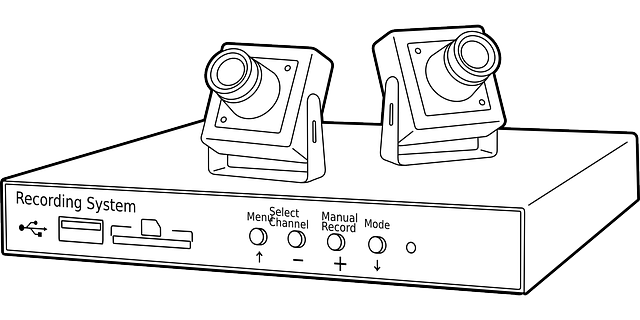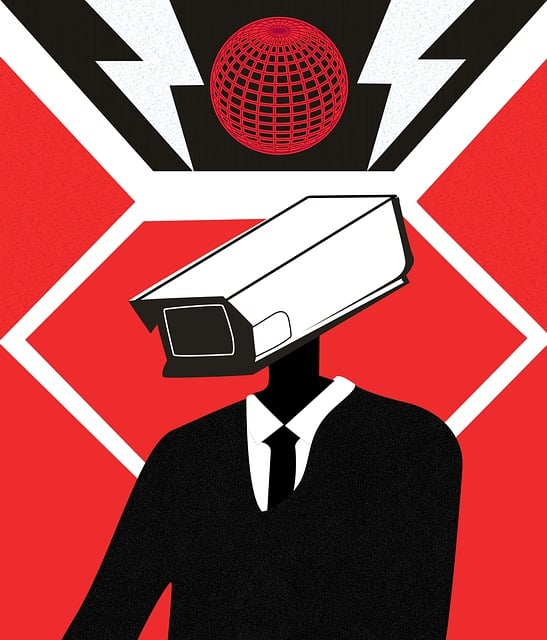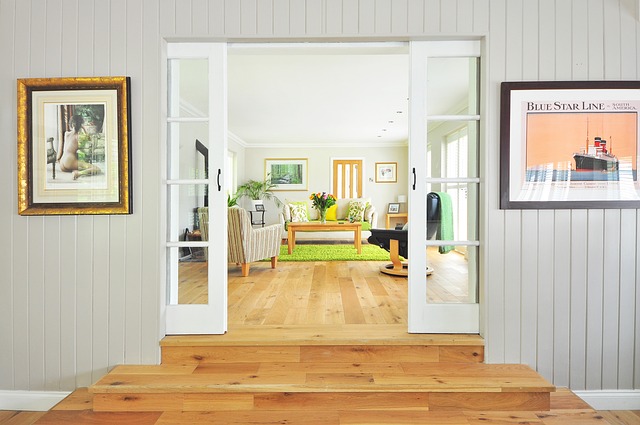Home security has significantly advanced with the widespread implementation of sophisticated CCTV systems, which now offer high-definition remote monitoring capabilities. These systems provide real-time observation of properties through smartphones or computers, effectively deterring burglars and enabling immediate action against suspicious activities. With features like motion detection, night vision, AI analysis for distinguishing normal from unusual activity, and integration with IoT technology, CCTV has become a fundamental component in protecting homes. The evolution of these systems includes strategic camera placement, intelligent motion-triggered recording, two-way audio communication, and compatibility with smart home devices to create the illusion of occupancy, all contributing to a robust defense against unauthorized entry and other threats. Regular updates ensure these systems remain at the forefront of security technology. Real-life examples demonstrate the effectiveness of CCTV in both deterring criminal activity and enhancing daily safety, showcasing its indispensable role in modern residential security strategies.
In an era where safeguarding one’s sanctuary is paramount, the integration of real-time monitoring into home security systems has emerged as a pivotal advancement. This article delves into the transformative impact of such technology on domestic safety, exploring its significance, operational capabilities, and practical applications. We will dissect the critical role of CCTV in augmenting surveillance, examine the cutting-edge features of contemporary home security setups, and offer best practices for their implementation. Furthermore, we’ll highlight real-world scenarios where real-time monitoring has proven its worth by effectively deterring intrusions and fortifying residential safety. Homeowners will gain insights into leveraging these systems to ensure their homes are not only secure but also equipped with the latest in surveillance innovation.
- Understanding the Importance of Real-Time Monitoring for Home Security
- The Role of CCTV in Enhancing Surveillance and Safety at Home
- Advanced Features of Modern Home Security Systems with Real-Time Monitoring
- Best Practices for Implementing a Comprehensive Real-Time Monitoring System in Your Home
- Case Studies: How Real-Time Monitoring Has Thwarted Home Intrusions and Enhanced Safety
Understanding the Importance of Real-Time Monitoring for Home Security

In an era where home invasions and burglaries are a growing concern, integrating advanced home security systems like CCTV surveillance offers a robust line of defense. Real-time monitoring enables property owners to observe their premises as they would if they were physically present, deterring potential threats and providing immediate responses to any suspicious activities. The technology behind these systems allows for continuous, high-definition coverage, ensuring that every detail is captured with clarity. This not only enhances the security of one’s home but also offers peace of mind, knowing that one’s most valuable assets are safeguarded around the clock.
The strategic placement of CCTV cameras, coupled with motion detectors and alarm systems, forms a comprehensive surveillance network within the home. This network acts as a virtual shield against unauthorized access, providing real-time alerts and video feeds directly to the homeowner’s smartphone or computer. The integration of artificial intelligence in these systems further elevates their effectiveness by distinguishing between usual activity patterns and anomalies that may indicate a security breach. With the advent of IoT technology, the potential for smarter, more responsive home security solutions continues to expand, ensuring that homeowners stay one step ahead of potential intruders.
The Role of CCTV in Enhancing Surveillance and Safety at Home

In recent years, home security has undergone significant advancements with the integration of CCTV systems playing a pivotal role in enhancing surveillance and safety at home. These closed-circuit television cameras are strategically placed around a residence to provide real-time monitoring capabilities. Homeowners can now keep an eye on their property from anywhere, deterring potential intruders with the knowledge that their activities are being recorded. The high-definition footage captured by modern CCTV systems not only serves as evidence in case of a break-in but also allows homeowners to remotely monitor live feeds through smartphones or computers, ensuring peace of mind while away from home.
The deployment of CCTV systems is a critical component in a comprehensive home security strategy. They offer 24/7 surveillance, capturing any unusual activity with crystal-clear clarity. This continuous monitoring not only deters criminal activities but also provides a responsive measure should an incident occur. With the advent of intelligent CCTV cameras equipped with motion detection and night vision capabilities, homes are better protected against unauthorized access, vandalism, or any other security threats, underscoring their role as a cornerstone in modern home surveillance and safety measures.
Advanced Features of Modern Home Security Systems with Real-Time Monitoring

Modern home security systems with real-time monitoring offer a suite of advanced features that go beyond traditional CCTV surveillance. These systems are equipped with high-definition cameras capable of capturing crisp, clear images at all times, allowing homeowners to view their property remotely through smartphones or computers. With the integration of AI-driven analytics, these systems can distinguish between normal activity and potential threats, sending real-time alerts directly to the user’s device. This proactive approach ensures that any unusual behavior is immediately addressed, enhancing the security of the home and providing peace of mind for residents.
Furthermore, modern surveillance solutions incorporate intelligent features such as motion-triggered recording, which conserves storage space by only recording when movement is detected. Advanced systems also offer two-way audio communication, enabling users to interact with individuals at their property remotely, effectively deterring unwanted visitors and providing a direct line of communication in case of an emergency. The integration of smart home technology further allows for the automation of various appliances, ensuring that lights can be turned on or off remotely, mimicking occupancy and potentially thwarting potential intruders. These sophisticated systems not only offer a comprehensive layer of security but also adapt to the evolving needs of modern living through continuous updates and new features.
Best Practices for Implementing a Comprehensive Real-Time Monitoring System in Your Home

Incorporating a comprehensive real-time monitoring system into your home enhances home security and provides peace of mind. To effectively implement such a system, start by assessing your home’s layout and potential vulnerabilities. Strategically place CCTV cameras at entry points, high-traffic areas, and valuable asset locations to cover blind spots. Ensure that these cameras offer high-resolution imagery and are equipped with night vision capabilities for around-the-clock surveillance. Additionally, opt for a system that offers remote access through smartphones or computers, allowing you to monitor your home in real-time from any location. Regularly test the system’s functionality and update software as necessary to maintain optimal performance and security.
Integrating motion-activated lighting alongside your CCTV system can further bolster your home’s defenses. Motion sensors should be installed in areas that are less visible but high in traffic, such as backyards or garages. These sensors not only illuminate dark spaces upon detection of movement but also trigger the surveillance cameras to start recording. It is advisable to choose a system that allows for seamless integration with other smart home devices, creating a network that can alert you of any suspicious activity immediately. Regular maintenance checks and updates are crucial to ensure the system’s reliability and effectiveness in safeguarding your home.
Case Studies: How Real-Time Monitoring Has Thwarted Home Intrusions and Enhanced Safety

Real-time monitoring systems have proven instrumental in safeguarding homes against intrusions. For instance, a homeowner in a suburban neighborhood integrated a comprehensive CCTV network with motion-activated alerts. This system notified the homeowner of suspicious activity while they were away, capturing footage of an individual attempting to force open a rear window. The immediate notification allowed law enforcement to apprehend the intruder before any breach occurred, highlighting the effectiveness of surveillance in preventing break-ins.
In another case, a family installed advanced home security cameras with facial recognition capabilities. One evening, the system identified an unfamiliar face at the front door. The homeowners were able to remotely access the camera feed and communicate with the visitor through a two-way audio system, confirming that it was a delivery person with their package. This incident showcased how real-time monitoring not only deters potential thieves but also enhances everyday safety by facilitating secure interactions without compromising privacy or convenience.
In conclusion, real-time monitoring represents a pivotal advancement in home security, serving as an effective deterrent against intrusions and enhancing overall safety. The strategic deployment of CCTV, alongside the sophisticated features of modern home security systems, offers property owners a proactive approach to surveillance. By implementing best practices for these systems, homeowners can significantly reduce risks. The case studies highlighted not only demonstrate the practical effectiveness of real-time monitoring but also underscore its critical role in safeguarding homes and families. As such, integrating real-time monitoring into one’s home security strategy is a commendable step towards ensuring peace of mind and protection against potential threats.
